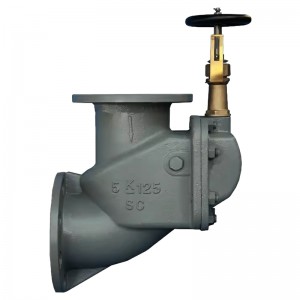Selecting the appropriate storm valve for your ship is crucial for maintaining the vessel’s safety and operational efficiency, especially in preventing seawater ingress during adverse weather conditions. Here are key factors to consider when choosing the right storm valve
1. Valve Type and Configuration
Storm valves come in various types and configurations, each suited for specific applications
- Straight (Vertical) Pattern: Ideal for installations where the pipeline runs vertically.
- Angle Pattern: Suitable for pipelines that change direction, typically at a 90-degree angle.
Choose the configuration that aligns with your ship’s piping layout to ensure optimal performance.
2. Size and Connection Standards
Ensure the valve’s size matches your pipeline’s diameter. Common sizes range from DN50 to DN300. Additionally, verify that the valve’s flange connections are compatible with your system’s standards, such as PN16 or JIS-5K/JIS-10K flanges.
3. Material Selection
Materials should be chosen based on the operating environment
- Body: Ductile iron or bronze for corrosion resistance.
- Disc and Stem: Bronze or stainless steel to withstand marine conditions.
- Seals: NBR (Nitrile Butadiene Rubber) for effective sealing and durability.
Selecting the right materials enhances the valve’s longevity and reliability.
4. Pressure and Temperature Ratings
Confirm that the valve’s pressure and temperature ratings align with your system’s requirements. For instance, some storm valves are rated for a maximum working pressure of 4 bar and temperatures ranging from -10°C to 60°C.
5. Closing Mechanism
Storm valves typically feature a closing mechanism to prevent backflow
- Manual Handwheel: Allows manual operation to open or close the valve as needed.
- Automatic Closure: Some valves are designed to close automatically under certain conditions.
Choose a mechanism that suits your operational preferences and safety protocols.
6. Compliance and Certification
Ensure the storm valve complies with marine industry standards and certifications, such as DIN 87101 Form B or relevant classification societies like Lloyd’s Register or DNV. Compliance guarantees that the valve meets safety and quality benchmarks.
7. Maintenance and Testing
Opt for valves that are easy to maintain and test. Regular maintenance, including hydrostatic testing, is essential to verify the valve’s strength and leak-tightness.
Post time: Feb-06-2025

